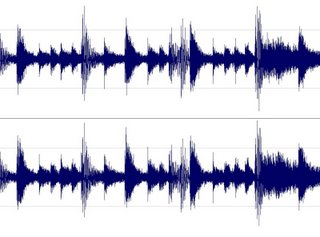
Photo by Stefan Schmuhl
Article from
ascent magazine, Issue 28 (excerpt on ascent site)
Monks, malts & Montréal: Can making beer & cheese be holy? Trappist monks think so
By Scott W. Gray January 2006
In 1869, American author Harriet Beecher Stowe had this to say of Montréal:
“Montréal is a mountain of churches. Every shade and form of faith is here well represented in wood or stone, and the gospel feast set forth in every form and shape [will] suit the spiritual appetite of all inquirers.”To that end, I am sitting down in my Montréal apartment to satisfy my own appetite, with a lunch steeped in spiritual history: Oka cheese and a bottle of Chimay Grande Reserve beer, both crafted by Trappist monks. These foods follow a tradition passed down from brother to brother and perfected over several centuries in cloistered, reflective communities. I spread the cheese onto a fresh baguette and wash it down with some peppery beer, all the while hearing – I kid you not – the tintinnabulations of church bells filling the autumn air. It is an incidence of strange serendipity, but indeed typical of any Saturday afternoon in Montréal.
The park across the street is teeming with life, the sun is high and clean and a cool autumn wind – foreshadowing, always, the winter to come – blows across streets and buildings, and off in the distance the bells of a church peal and reverberate through the area. If you were to climb any of the city’s numerous and prominent wrought-iron fire escapes for a look around, you would probably be most struck by the conspicuous number of church spires dividing up rows of aging brownstones and factories. Every block or so, another set of double spires creates a landmark for this city’s devout communities.
If you were to remain on your fire escape and look west, you would see Mont-Royal – the city’s famous landmark – ornamented with the enormous cross that looks down upon this extraordinary city. Sailors who met stormy seas in the St. Lawrence Seaway and were in danger of shipwreck erected this cross in 1645. Praying for their safe passage, they made a pact that if they should be spared, by God’s graces, they would erect a cross on the highest peak they found to reflect their salvation for years to come. Those of us living in Montréal today still live under the gaze of this cross, ever aware of the presence of God, if the churches, mosques and synagogues on nearly every street corner were not reminder enough. In 1881, Mark Twain said that visiting Montréal was “the first time [he] was ever in a city where you couldn’t throw a brick without breaking a church window,” and many of the same churches exist today.
Back at my kitchen table, lunch continues. The Oka cheese is a whitish-yellow wedge with a crust of dusty orange. The label shows its unusual origin, with a drawing of the La Trappe monastery in Oka, Quebec, and a small diamond saying: depuis 1863. This is a soft, surface-ripened cheese, with a crumbly orange skin around its edge. It smells of old wood – a little musty, but not unpleasant and certainly not as pungent as some cheeses I’ve had since moving to Montréal. Oka is surprisingly subtle, tasting creamy without any sharpness on the upper palate, and lingers in the throat. It is a cheese that is distinctive and proud without being overly forceful, and I cannot help thinking that this reflects the monks who craft it.
While the cheese made by these monks is well respected, Trappist beer is created with such care and skill it has vaulted into a prominence out of step with supply, and I think out of step with the humility of its brewers. There are only six official Trappist breweries in the world (five in Belgium and one in the Netherlands), yet their products are sought the world over. To retain the title of “Trappist beer” these six breweries must follow three rules: that the beer be brewed in a Trappist abbey or directed by Trappist monks; that income from the brewery be used for charitable work and not for the abbey’s profit; that the monks retain control of the brewery, its brewing choices and decision-making.
Dedicated to a life of work in the service of God, monks live in keeping with rules set out by St. Benedict, considered the father of all Christian monks. St. Benedict’s book of seventy-three chapters (known colloquially as St. Benedict’s Rule, but more formally as Regula Monachorum, Regula Benedicti) governs Christian monasteries, stating among other precepts that a monastery should produce everything it needs to survive. Chapter 48 says that, “you are only really a monk when you live from the work of your hands,” so the monks dedicate every day to prayer and manual labour. However, this dedication to labour and prayer was subject to some interpretation. In 1666, around the same time as the cross was erected on Mont-Royal, in fact, the Cistercian order of monks divided into two camps, based on “mitigated” or more casual observance of monastic duties, and “strict observance” of monastic duties. The monks who adhered to strict observance were the Trappists.
Every day the Trappist monks alternate seven prayer sessions with work such as cooking and cleaning, tending gardens, crafting beer, or selling the beer and other wares they’ve made. Trappists are known for these handcrafted goods, offering to the lay public cheese, wine and liquor, beer, soap, children’s clothing, and vegetables they’ve grown, mostly for the communities around the abbey. The aim of the Trappist monks, like so many spiritual renunciates in so many different traditions, is to be a living vessel of the Godhead. Ascetic and humble in lifestyle, living in a community of chastity and poverty, the Trappists dedicate themselves to prayer, and aim to elevate their work to the level of prayer – a concept that some of us may know as Seva, or Karma Yoga. It is a simple life that has remained largely unchanged since the seventeenth century. The centuries that have passed have given the Trappist abbeys time to hone the harvest of their work, and develop beers that are unsurpassed in quality. These products represent the spiritual service of the monks, and are sold solely to sustain the abbey and its inhabitants, and raise money for charitable work.
However, in today’s world, and our culture of gratification (often regardless of cost), the monks are finding their products to be in much greater demand than they can meet. The internet has brought new “specialty beer” connoisseurs into existence, and created a portal where, generally speaking, consumerism reigns.
In June 2005, a Trappist beer from the St. Sixtus monastery in Westvleteren was voted the finest beer in the world by an internet site dedicated to beer (www.ratebeer.com). The site’s survey featured thousands of votes from beer aficionados from sixty-five countries, and St. Sixtus’ Westvleteren 120 emerged ranked first. It is created in a small abbey, home to thirty monks, and primarily available only to those who visit this cloistered Belgian community. Faced with a sudden interest in their beer and facing more demand than they could meet, the Trappists of Westvleteren ignored the rules of the market and refused to boost production of their Westvleteren 120. They simply sold all the beer they had already brewed, and prepared for next year, as they and the fathers before them have done for many years. But it is interesting to note that this is not an anti-consumerist move, or a rejection of the market; it is simply a choice in priorities.
The father abbot of Westvleteren has said, “We are not brewers, we are monks. We brew beer to be able to afford being monks.” Rather than become a brewery run by monks, the brothers at Westvleteren chose to remain monks who brew beer, a choice that emphasizes the supreme objective of every monk: a life of prayer. To cater to the demands of the market would, in some ways, show too great a reverence for this world, and risk missing the overarching goal of the Trappists. After all, they didn’t become monks to make money.
Sitting here at my kitchen table, I can’t help but be struck by the disconnect between the world I see around me, and the Trappist monasteries that made my lunch. It seems as if anything, even the most sacred, can be bought for a price. Montréal’s churches experience declining numbers of parishioners as a generation ages, and increasingly churches are sold to private developers. Most conspicuous to me are the condominiums in Montréal’s Little Italy, which feature upscale apartments for sale inside the church itself. The fact that I could even buy a Trappist beer from Belgium in a small liquor store in Montréal seems odd to me, but I am not immune to taking it for granted. While Chimay is a wonderful beer conveniently located at a store in my city, I have to admit to feeling affronted by the fact I couldn’t just walk out and buy a bottle of Westvleteren 120. By these standards the Chimay – which is the spiritual yield of men who have given their lives to God – is not good enough for me, the consumer. Perhaps I need to take a page out of the Trappists’ book and be satisfied by simpler, more spiritual things in life.
I pour another portion of the dark Chimay ale into a large wineglass, as per the bottle’s instructions, and see its malty colour and white, foamy head. It smells like dusty fruit, and tastes at first of caramel and pepper. It is fruity and sweet on the tongue, but the taste changes as it stays in the mouth, giving off hints of orange and coffee, and finally malt in the back of the throat. I spread more Oka cheese onto a fresh slice of baguette, take a sip of beer, and listen to the church bells echoing amongst the double spires on this typical Saturday afternoon. Soon enough the snow will blanket the city and fill it with a profound winter quiet, as if we are all ensconced in a cloistered community under the cross on Mont-Royal. But for today it is enough to be thankful for the simple products of a life of prayer and faith, in a humble apartment, under a clear autumn sun.
 what to get for the hip hop fan on your holiday list, who already has everything (including this, this and this)?
what to get for the hip hop fan on your holiday list, who already has everything (including this, this and this)?










